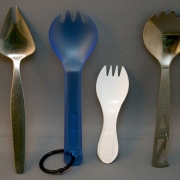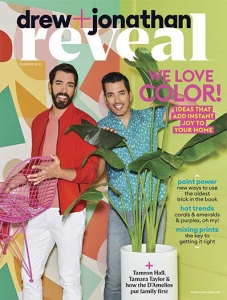Food For Thought and For Blog Posts
As part of positioning your business or practice as a go-to source of information, you want your blog content to arouse curiosity and interest, all the while amplifying awareness of what you have to offer that is unique in the marketplace. Not only do you want your own brand to be perceived as innovative, you want to actually become more innovative in serving your customers and clients. And, while you may not be involved in a food-related industry, this article in Mental Floss Magazine, in which Michele Debczak traces the history of inventions that changed food history, might well trigger some content ideas for your blog….
1874 –
American doctor Samuel W. Francis received a patent for his spoon-fork-knife hybrid. The new utensil didn’t take off until the 1950s, when Hyde Ballard trademarked the name spork and the plastic revolution made it easy to manufacture. What devices – or what processes – help make your product or service more convenient for users?
1905 –
Robert J. Barkley of Kansas had created an egg carton, obviating the necessity of counting and of the danger of breaking the eggs by frequent handling. The Bartender’s Guide to Batching describes an efficient way to make sure that in busier times, every customer receives a quality and consistent drink. Streamlining your delivery service can increase your website’s sales, SellerExpress advises. What steps does your business or practice take to make things convenient for users?
1928 –
In 1928, Iowa inventor Otto Rohwedder filed a patent for a machine that sliced entire loaves of bread at once. Kleen Maid Sliced Bread debuted on July 7, 1928. The day before, the Constitution-Tribune published a glowing endorsement calling the product “the greatest forward step in the baking industry since bread was wrapped”. (That copy is believed to be the origin of the phrase “the greatest thing since sliced bread”.) Consumers prioritize saving time, effort and money. A “tutorial” in your blog can suggest ways for readers to accomplish a task in less time and at a lower cost.
1933 –
As Dow Chemical lab worker Ralph Wiley was cleaning equipment, he noticed a thin plastic film had formed inside a vial. The material naturally adhered to surfaces and blocked water and oxygen molecules. Originally used to protect military fighter planes and car upholstery, the product was renamed Saran Wrap after Wiley’s boss’ wife Sarah and daughter Ann. An “innovative blog” describes trends in your industry, handy statistics, and useful advice to readers, as well as highlighting innovations your own business or practice is introducing.
1945 –
Raytheon Company engineer Percy LeBaron Spencer was visiting a lab testing microwave-producing magnetrons when he noticed that the candy bar in his pocket had melted. His dry-cleaning bill ended up being a small price to pay for the flash of inspiration he had that day. As the story goes, Spencer sent out for some uncooked popcorn, and when it popped in front of the active magnetron, Spencer realized that microwave radiation could be used as a quick and convenient heat source for cooking. Later that year, he filed a patent for the microwave oven. By introducing readers to the people behind your brand, you “humanize” your blog content, helping readers feel a connection to your company or practice.
Your business or practice may not be directly related to food, but these tidbits about inventions that changed the food industry might well trigger some blogging “food for thought”!






Follow us online!